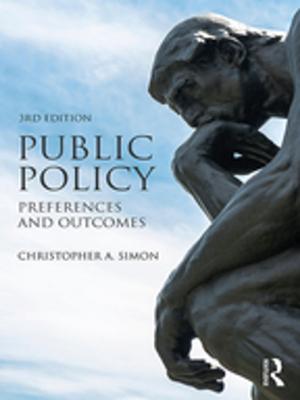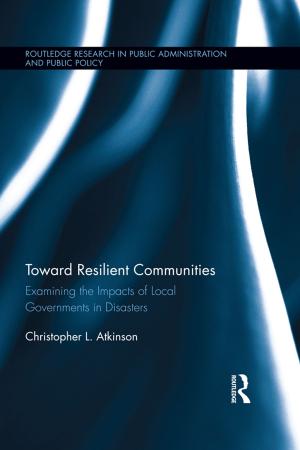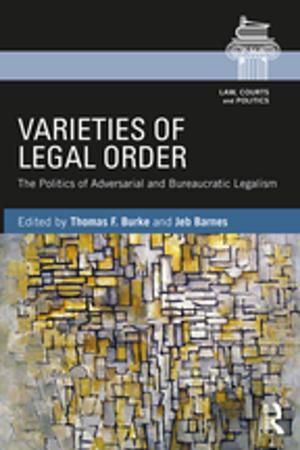Political Incompetence: What's Wrong With Our System and How To Fix It
Nonfiction, Social & Cultural Studies, Political Science, Government, Public Affairs & Administration| Author: | Olin Bray | ISBN: | 9781476067285 |
| Publisher: | Olin Bray | Publication: | July 17, 2012 |
| Imprint: | Smashwords Edition | Language: | English |
| Author: | Olin Bray |
| ISBN: | 9781476067285 |
| Publisher: | Olin Bray |
| Publication: | July 17, 2012 |
| Imprint: | Smashwords Edition |
| Language: | English |
Our political system is in trouble. Myths and opinions often override facts, data, and analysis in determining policy and elections. This book identifies one of our problems, political incompetence in both the electorate and officials. It identifies critical political competence skills, such as political mythbusting, and shows how they can be used to create a deeper more accurate understanding of critical policy and campaign issues that must be resolved. It shows how to analyze political statements to decide if they are myths or statements of fact, which may be correct or not. Some widely believed myths that are gridlocking our system are challenged. As Will Rogers said, “It’s not what we don’t know that gets us into trouble, it’s what we know that just isn’t so.” Greater political competence can help us avoid this trap.
Part I describes the problem and some of its symptoms, explains what political competence is, and identifies and challenges ten widely believed myths. For example, one widely believed myth, even in Congress, is that tax cuts always stimulate economic growth. Regan cut taxes (the top marginal income tax rate) twice and George W. Bush cut them once. In the first case the five-year average GDP growth rate went up by 12 percent, but in the other two cases it declined by 26 and 36 percent. However, when was the last time you heard a serious debate about when tax cuts are appropriate and when they are not?
Part II reviews some basic methodology issues – how to ask the right questions. The right answer to the wrong policy question is at best wasteful and at worst disastrous. Policy questions based on myths are always the wrong question. It also reviews some basic statistics so you can recognize problems and bad analysis, whether caused by ignorance or deliberate deception. For example, the average and the median (the value for which half of the measurements are less and half are greater) can provide very different pictures when used to justify a policy. Always ask for both. Sometimes we may be given the truth, but not the whole truth – which is just another form of deception. Many people are doing surveys and polls and trying to tell us what most people think. However, unless it was a random sample, the sample results tell us nothing about the larger group. Did the people doing the survey not know this (ignorance) or is it deliberate deception?
Part III provides frameworks for several policy areas (taxes, health care, and employment) and shows how policy proposals can have serious, often unanticipated, ripple effects, sometimes with disastrous consequences. For example, when looking at the tax burden, the top marginal rate is much less important than the effective rate, which is always far lower. To address our health care problems, there are three critical issues – access, cost, and quality. They all must be addressed together, but some see only one issue (usually cost) and others want to address them with different priorities. One myth affecting the whole health care debate is that the US has the best health care system in the world and we shouldn’t mess with it. Unfortunately, as the data shows, we only have the most expensive, not the best in terms of actual health outcomes and results. When looking at employment rates, in the short term a job is a job regardless of whether it is in the private or public sector, although it does matter in the long term. Therefore, if the private sector is adding jobs while the government sector is cutting them, you may not be making a lot of short-term progress. As in many cases, you may need to solve the short-term problem before you can effectively address the long-term problem.
Part IV talks about group and organizational skills that can help people leverage the individual political competence skills described in the earlier parts. It also describes how several organizations are working to develop political competence in a group context.
Our political system is in trouble. Myths and opinions often override facts, data, and analysis in determining policy and elections. This book identifies one of our problems, political incompetence in both the electorate and officials. It identifies critical political competence skills, such as political mythbusting, and shows how they can be used to create a deeper more accurate understanding of critical policy and campaign issues that must be resolved. It shows how to analyze political statements to decide if they are myths or statements of fact, which may be correct or not. Some widely believed myths that are gridlocking our system are challenged. As Will Rogers said, “It’s not what we don’t know that gets us into trouble, it’s what we know that just isn’t so.” Greater political competence can help us avoid this trap.
Part I describes the problem and some of its symptoms, explains what political competence is, and identifies and challenges ten widely believed myths. For example, one widely believed myth, even in Congress, is that tax cuts always stimulate economic growth. Regan cut taxes (the top marginal income tax rate) twice and George W. Bush cut them once. In the first case the five-year average GDP growth rate went up by 12 percent, but in the other two cases it declined by 26 and 36 percent. However, when was the last time you heard a serious debate about when tax cuts are appropriate and when they are not?
Part II reviews some basic methodology issues – how to ask the right questions. The right answer to the wrong policy question is at best wasteful and at worst disastrous. Policy questions based on myths are always the wrong question. It also reviews some basic statistics so you can recognize problems and bad analysis, whether caused by ignorance or deliberate deception. For example, the average and the median (the value for which half of the measurements are less and half are greater) can provide very different pictures when used to justify a policy. Always ask for both. Sometimes we may be given the truth, but not the whole truth – which is just another form of deception. Many people are doing surveys and polls and trying to tell us what most people think. However, unless it was a random sample, the sample results tell us nothing about the larger group. Did the people doing the survey not know this (ignorance) or is it deliberate deception?
Part III provides frameworks for several policy areas (taxes, health care, and employment) and shows how policy proposals can have serious, often unanticipated, ripple effects, sometimes with disastrous consequences. For example, when looking at the tax burden, the top marginal rate is much less important than the effective rate, which is always far lower. To address our health care problems, there are three critical issues – access, cost, and quality. They all must be addressed together, but some see only one issue (usually cost) and others want to address them with different priorities. One myth affecting the whole health care debate is that the US has the best health care system in the world and we shouldn’t mess with it. Unfortunately, as the data shows, we only have the most expensive, not the best in terms of actual health outcomes and results. When looking at employment rates, in the short term a job is a job regardless of whether it is in the private or public sector, although it does matter in the long term. Therefore, if the private sector is adding jobs while the government sector is cutting them, you may not be making a lot of short-term progress. As in many cases, you may need to solve the short-term problem before you can effectively address the long-term problem.
Part IV talks about group and organizational skills that can help people leverage the individual political competence skills described in the earlier parts. It also describes how several organizations are working to develop political competence in a group context.















